Bird Term: Uropygial Gland
The Secret Behind Waterproof Feathers & More: The Preen Gland
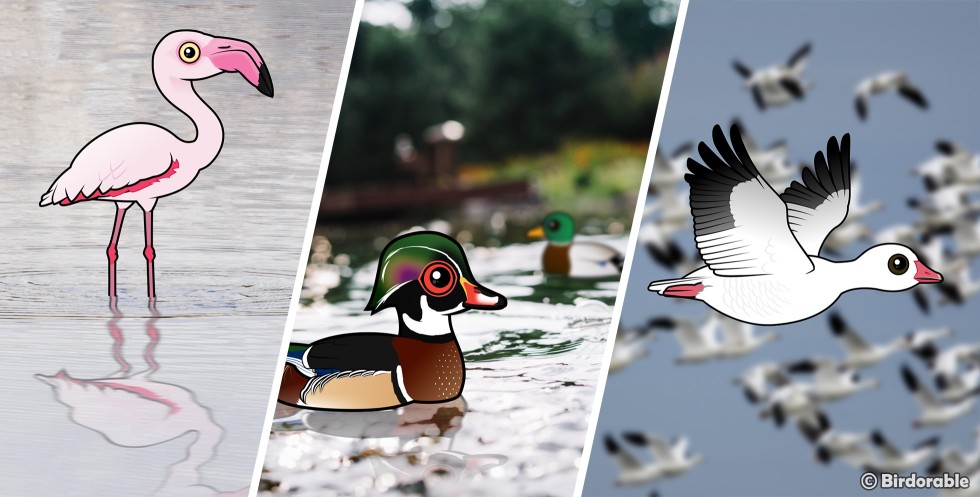
The Greater Flamingo, Wood Duck and Snow Goose all have a uropygial gland that keeps their feathers waterproof
Birds have a unique way of keeping their feathers in top shape, thanks to a special gland called the uropygial gland. Also known as the preen gland, this small but important organ is located near the base of a bird’s tail. It produces an oily secretion that birds spread over their feathers during preening, helping to keep them clean, flexible, and waterproof. Birds apply the oil by rubbing their beak or head against the gland and then spreading it over their body.
Not all birds have a uropygial gland, but for those that do, it plays a crucial role in feather maintenance. The oil provides waterproofing, which is especially important for water birds like ducks and swans. When they preen, they distribute the oil across their feathers, creating a protective barrier that keeps water from soaking in. This is why ducks can swim without getting waterlogged.
Most swans, ducks, and geese have highly active uropygial glands that keep their feathers super waterproof. This allows them to float effortlessly without getting waterlogged. If a duck’s gland stops working or is damaged, it can lose buoyancy and struggle in the water. That’s why preening is such an important part of a duck’s daily routine!
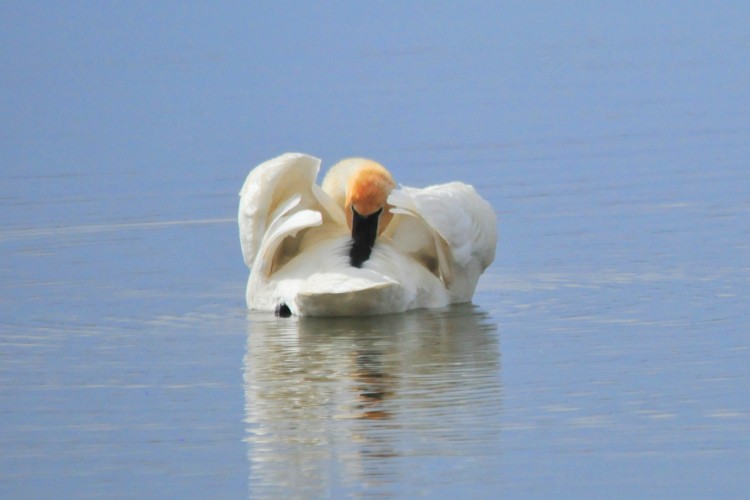
Preening Trumpeter Swan by Tom Koerner/USFWS
Unlike many waterbirds, Anhingas have a reduced uropygial gland, meaning they produce very little waterproofing oil for their feathers. As a result, their feathers become easily waterlogged, which actually helps them dive and swim underwater more efficiently to catch fish. However, this also means they need to dry off frequently, which is why Anhingas are often seen perched with their wings spread wide in the sun. This classic pose helps them dry their feathers and regulate their body temperature after a long swim!
The oil from the uropygial gland has other functions besides waterproofing; it helps condition feathers, preventing them from becoming brittle or breaking.
For example, while most owls have uropygial glands, their feathers are designed for silent flight rather than swimming. Their preen oil is not used for waterproofing, which is why they absorb water easily.
In addition to waterproofing and conditioning, the oil from the uropygial gland may also have antimicrobial properties. Some studies suggest that it helps protect against bacteria and fungi that could damage feathers.
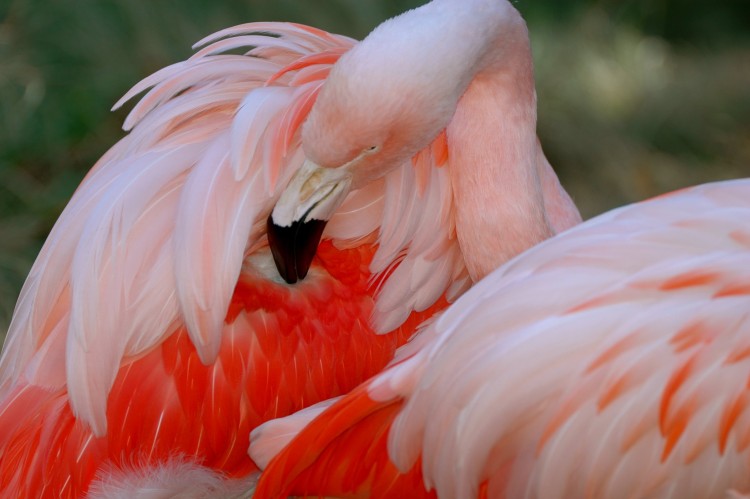
Preening Chilean Flamingo by Red [CC BY-ND 2.0]
Flamingos, like the Chilean Flamingo and Greater Flamingo, use their uropygial gland oil not just for waterproofing—but also as a sort of cosmetic! They actively rub the preen oil onto their feathers to enhance their pink color. This behavior is especially noticeable during breeding season when they want to look their brightest to attract a mate. A flamingo that applies more oil appears more vibrant and may have better luck finding a partner!
Uropygial gland secretions in Spotless Starlings have been shown to have an odor that may help birds identify one another. The specific scents can indicate personal demographic information (like age, and reproductive status) to other birds!
Some species, like parrots, lack a uropygial gland and rely on powder down feathers instead, which produce a fine dust that helps with feather maintenance.
The uropygial gland is a fascinating adaptation that helps birds stay in peak condition. Whether it's keeping feathers waterproof, flexible, attractive, or free from harmful microbes, this small gland plays a big role in a bird’s daily life.
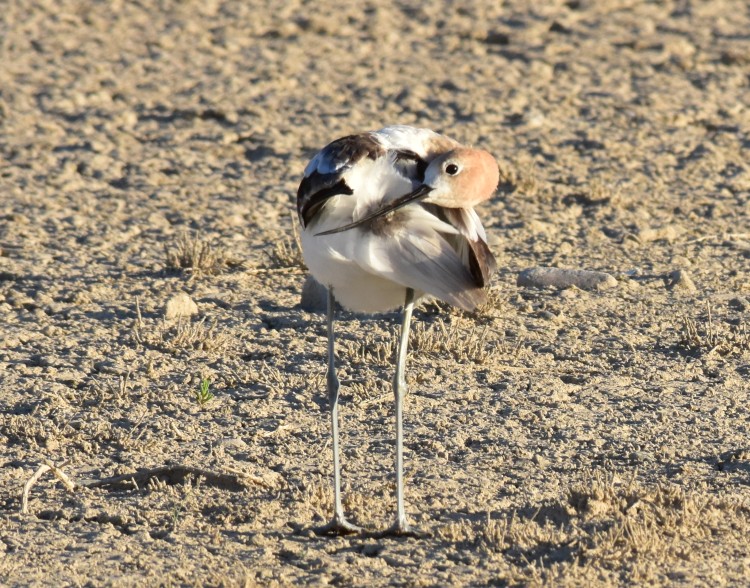
American Avocet accessing uropygial gland by Tom Koerner/USFWS


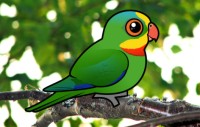


Comments
Leave a comment
Thank you!